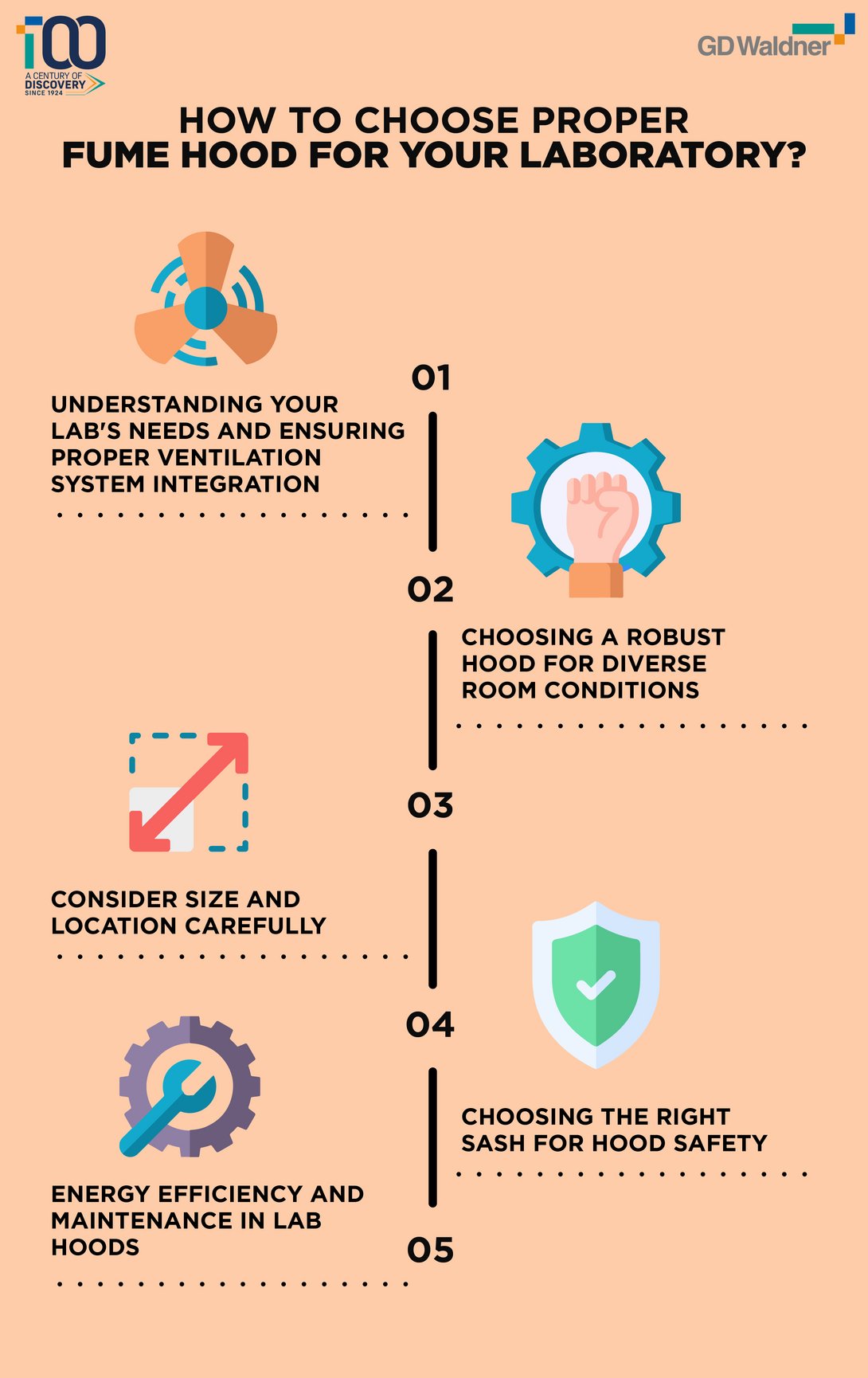According to the National Institute for Occupational Safety and Health (NIOSH), workplace exposure to hazardous substances poses a significant threat to occupational health, with potential long-term consequences. Fume hoods, by design, address this concern by providing a controlled environment that effectively contains and exhausts harmful fumes, thereby minimizing the risk of exposure.
The selection of an appropriate fume hood becomes a critical aspect of laboratory safety protocols. This process involves a meticulous assessment of the laboratory's specific requirements, taking into account the types and quantities of chemicals used, as well as the potential hazards associated with specific experimental procedures.
Explore the how-to’s of choosing the proper fume hood for your lab:
- Understanding Your Lab's Needs and Ensuring Proper Ventilation System Integration: First up, it’s crucial to understand your lab’s needs. Just like there isn’t no point in buying a tractor when you’re going to be doing flower gardening, it doesn’t make sense to get a fume hood that doesn’t fit your lab’s requirements. What’re you going to be doing in your lab? What kind of chemicals or substances will you be working with? How much heat or energy will be involved? All these factors dictate the type and size of the fume hood you should go for. While there is a class of ventilated enclosures that are ductless, this class uses filters and will work in very select situations. We are going to focus on ducted hoods. The best fume hood in the world does nothing until it is connected to a properly designed and maintained laboratory ventilation system. Remember that room conditions are as critical as the design of the fume hood.
- Choosing a Robust Hood for Diverse Room Conditions: Secondly, let’s talk about overall performance. Not all hoods are created equal. A good source of information is the hood manufacturers ASHRAE 110-2016 AM (As Manufactured) by reviewing these reports from several suppliers you will be able to compare performance. Some hood will be more robust. So, pick a hood that is very robust and will work well in a variety of room conditions.
- Consider Size and Location Carefully: Third, think about the size and location. Size does matter in this case, folks. Not only should the fume hood fit your laboratory, but you need to have enough room around it for proper air flow and user movement. Make sure you measure your space before you go shopping. You want to place the hood away from foot traffic and sources of cross drafts such as supply air and lab doors. There should never be any open windows or doors. For the hood to function safely the room supply air has to be mechanically controlled.
- Choosing the Right Sash for Hood Safety: Fourth, consider the sash. That’s the movable part of the hood that allows access to the inside. It also acts as a safety barrier. There are three types - vertical and horizontal and combination styles. As a general rule the vertical sash is the safest. While combo sashes we very common for a number of years, there are no longer in favor because of the problems with sash management and the fact that horizontal sashes create unusual airflow that exposes the user to a much greater risk of exposure.
- Energy Efficiency and Maintenance in Lab Hoods: Last but not least, you’ve got to think about energy efficiency and maintenance. Some hoods are designed to be more energy-efficient than others, so they can reduce your overall lab operating costs. And, of course, the ease of maintenance is a major factor. You want something that’s going to be easy to clean and service, not something that’s going to be a headache down the road.
So. It might not be as exciting as a new power tool or a shiny tractor, but, the right fume hood can save you a world of trouble in the long run.

